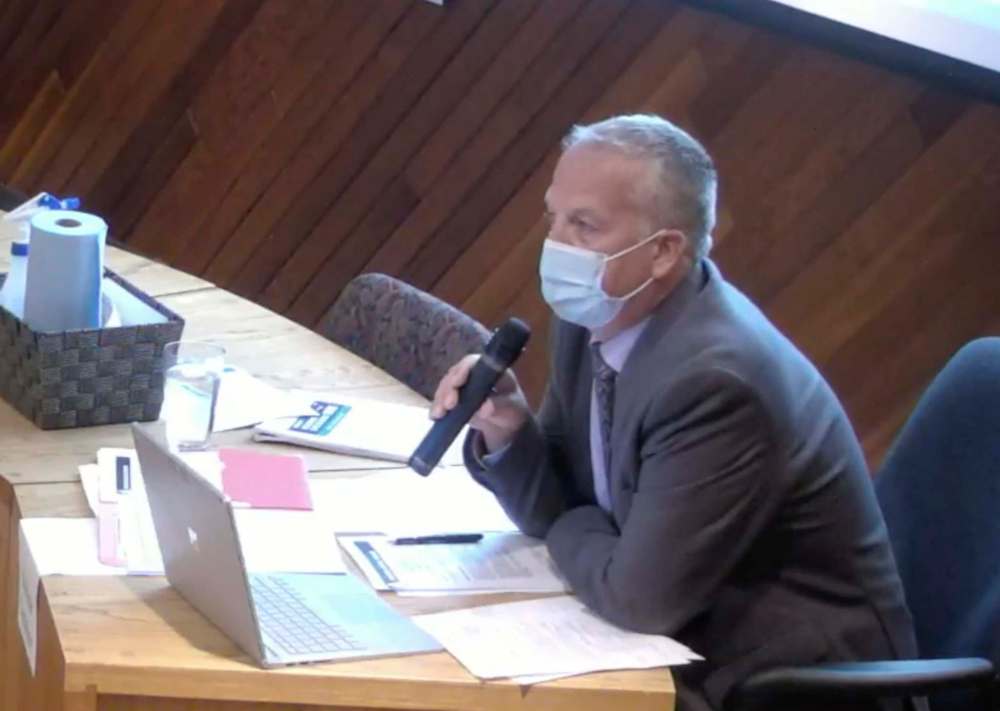Westman school divisions launch remote learning program together
Advertisement
Read this article for free:
or
Already have an account? Log in here »
We need your support!
Local journalism needs your support!
As we navigate through unprecedented times, our journalists are working harder than ever to bring you the latest local updates to keep you safe and informed.
Now, more than ever, we need your support.
Starting at $15.99 plus taxes every four weeks you can access your Brandon Sun online and full access to all content as it appears on our website.
Subscribe Nowor call circulation directly at (204) 727-0527.
Your pledge helps to ensure we provide the news that matters most to your community!
To continue reading, please subscribe:
Add Brandon Sun access to your Winnipeg Free Press subscription for only
$1 for the first 4 weeks*
*$1 will be added to your next bill. After your 4 weeks access is complete your rate will increase by $4.99 a X percent off the regular rate.
Read unlimited articles for free today:
or
Already have an account? Log in here »
Hey there, time traveller!
This article was published 16/09/2020 (1843 days ago), so information in it may no longer be current.
Six Westman school divisions are partnering up to create Westman Consortia, which will provide at-home learning support to students who can’t attend classes physically due to health reasons.
The Brandon, Mountain View, Park West, Rolling River, Southwest Horizon and Swan Valley school divisions are going to provide staff members or financial resources to help kindergarten through Grade 8 students not attending school due to medical advice participate in remote learning.
The announcement was made by Brandon School Division Supt. Marc Casavant at Monday’s board of trustees meeting.

Different responses are being developed for children needing remote learning in three scenarios, Asst. Supt. Mathew Gustafson said.
The first scenario is comprised of students who normally attend classes but periodically miss class because of illness, displaying COVID-19 symptoms or must self-isolate for a reason other than displaying symptoms. In this situation, teachers provide remote learning for the duration of the absence.
Second is planning for remote learning in case the school division is put under level orange or higher restrictions under the province’s pandemic response system. With this scenario, teachers would provide remote learning for as long as the more stringent restrictions remain in place which prevent students from attending class in person.
The final scenario deals with students who cannot attend school in person because they are following medical advice, are immunocompromised, or because of concerns regarding another family member in a shared household.
In this final scenario, Gustafson said that non-classroom teachers would provide remote learning opportunities.
“Students would be assigned to remote learning classrooms, which will be staffed by certified teachers,” he said. “The instructional day will be a combination of synchronous learning, small group learning, individual student-learning conferencing and independent student work.”
He also admitted that the divisions involved have never done anything like this and are “building the ship as they sail it.”
In a phone interview with the Sun on Tuesday, he further explained that while these are uncharted waters, the divisions involved were still able to follow Manitoba’s curriculum and draw on the experiences of their teachers when making plans. The uncertain nature of what they’re doing is also why the program wasn’t ready to roll out when classes returned on Sept. 8.
“We know we learned some lessons from the end of the (last) school year, but this is quite a bit different type of a setting,” Gustafson said. “We want to make sure we say to our parents that what they experienced last spring is not what they’ll be experiencing this year coming up because this is a different type of year because students didn’t start the year in a class.”
The classroom is the best place for students, he emphasized, but the division recognizes that not all kids are able to attend safely during the pandemic.
He couldn’t recall when planning for this program between all the school divisions started but said it was during the summer. Gustafson did not know how many teachers in the participating divisions will be assigned to this project, saying that the numbers of staff needed would be clearer once divisions have determined how many students will be using the service.
However, he said it’s looking like there will be eight virtual classrooms that will accommodate both English and French immersion students.
Asked why the plan does not cover high school students, Gustafson said high schools have had alternative programming for students for some time and are better equipped to deal with students needing to take classes remotely.
The Sun has recently reported on the case of Bruce Strang and Nancy Hennan’s 15-year-old son Sean, who lives with Down syndrome and is immunocompromised. Sean’s parents have been frustrated that any distance learning programs being offered would not include an aide, which he needs to help him keep focused on his school work.
This distance learning program does not provide students with developmental or intellectual disabilities extra resources, Gustafson said, and parents of children with such disabilities will need to work with their school’s team to figure out a solution.
Strang told the Sun Tuesday that he and his wife met with representatives from Sean’s school on Monday and are working toward a solution to meet his needs.
The expected start date for this distance learning program will be staggered over Sept. 17 and 18.
The division’s other Asst. Supt. Elaine McFadzen added during the board meeting that parents need to understand that not all supports offered by schools will be transferable to remote learning and that parents will need to participate in their children’s remote learning.
» cslark@brandonsun.com
» Twitter: @ColinSlark
